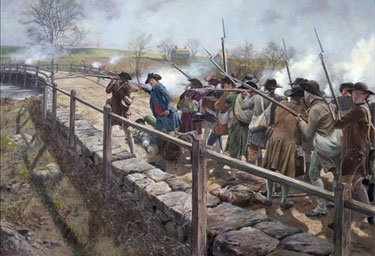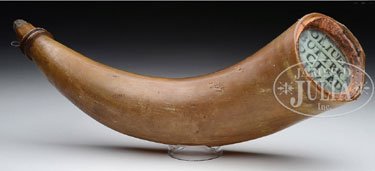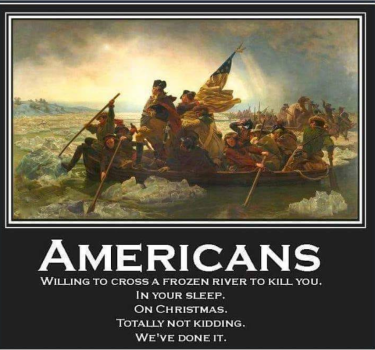
By the rude bridge that arched the flood,
Their flag to April’s breeze unfurled,
Here once the embattled farmers stood,
And fired the shot heard round the world.
—Ralph Waldo Emerson
At James D. Julia’s Winter Fine Arts, Asia, Antiques Auction, February 3,4, & 5, 2016, Lot 2026:
EXTRAORDINARILY RARE AND HISTORIC REVOLUTIONARY WAR POWDER HORN USED BY MINUTEMAN OLIVER BUTTRICK AT BATTLE OF CONCORD, APRIL 19, 1775.
In untouched, original condition and inscribed “Oliver Buttrick, OCT. 1774â€, this important powder horn was carried at the first battle of the American Revolution. Early in April, 1775 word was passed on to the British command that rebel colonists had amassed arms and powder now hidden in Concord, MA. Lt. Col. Francis Smith was commander of about 700 British army regulars in Boston and on the morning of April 19th an expedition would march from Boston to Concord to capture and destroy these arms. Word of this action was discovered by the colonists and immediately spread to local militias. One of those individuals responsible for the alarm was Paul Revere who was immortalized by Henry Wadsworth Longfellow in the poem “The Midnight Ride of Paul Revereâ€. The British arrived at Lexington first, however the minuteman militia had not had ample time to assemble in force and fell back. The British regulars then moved on to Concord. Concord however, was a different story. Enough time had passed so that a large contingent of minutemen had been alerted and a formidable force held the North Bridge in Concord defying the British regulars. The confrontation eventually erupted into gun fire which became known as “the shot heard round the worldâ€. This historic battle is known as the first true major military engagement of defiance from the colonists with the British Empire. As such some consider it the most important military engagement in the annals of the evolution of the United States. Young Oliver Buttrick was one of seven Buttrick family members to join with other minutemen in this historic conflict. Oliver’s uncle, Major John Buttrick led the advance at the Old North Bridge that day. As referenced in his detailed pension application of 1834, Oliver was in David Brown’s Company and served alongside his brother William, who was killed three weeks later at Bunker Hill. Fellow Minutemen that day included Abiel Buttrick, Daniel Buttrick, Tilly Buttrick, Willard Buttrick and John Buttrick, Jr. (the 14-year old fifer). …
Oliver Buttrick fought in such celebrated arenas as Point Shirley, Bennington, Ticonderoga, Fishkills, and Soldiers Fortune (near West Point). He also performed guard duty on a prison ship in Boston Harbor. The date on the horn is significant. Unrest among the Patriots started years before this first skirmish. In the summer and fall of 1774, rebellion was at fever pitch. In fact, on October 4, 1774, the recently formed Massachusetts Provincial Congress issued what amounted to its own declaration of independence and on October 24, 1774, that same angry and determined Congress authorized the procurement or armaments. 18th Century American soldiers and militiamen identified their horns with their name and often the date it was made. The use of inked vellum under glass lens was a rare form of decoration and seen on only a few other 18th Century examples. This powder horn is among the few existing objects that can be directly associated with the first Battle for American Independence and to our knowledge this powder horn is the only Colonial horn used at this historic confrontation to ever be offered for sale. In fact, to our knowledge, nothing used by a minuteman at the Concord engagement has been sold at auction in many years. …
CONDITION: Very good with original surface, minor cracking and chipping near lip. Wood bezel has two chips which are well patinated as can be seen in photos and glass cover lens has a vertical crack. Original bailing wire loops are still present with smooth iron patina. 49789-5 (20,000-50,000)









